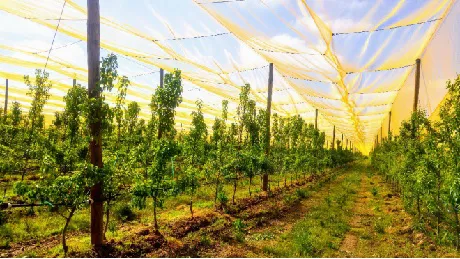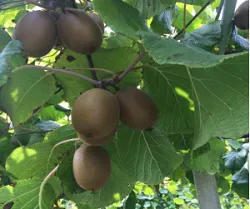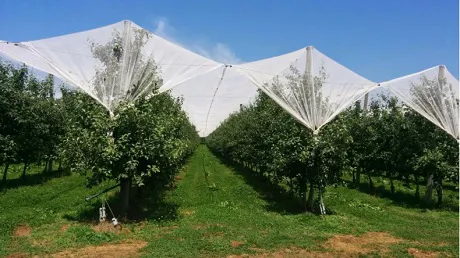As part of an agriculture that is increasingly oriented towards the technical control of all variables, the obvious question is: why can't we identify which light is good for our orchards?
 Yellow Iridium® in Piedmont
Yellow Iridium® in Piedmont
Technologically-advanced irrigation systems are increasingly used not only to save money on bills but also because excessive watering could damage plants.
We have come to dosing irrigation water and nutritional elements and monitor soil composition, but wouldn't it be important to prevent excessive light, too?
Agronomic experience has identified the photosynthesis peak at around 30°C. It is important for light quantity not to exceed this peak in periods of high insulation and to maximize light when there is little available.
Research carried out by University of Marche showed how photoselective nets reduce the quantity of light reaching the plant (v.PPFD) while increasing the photosynthesis rate (v. photosyntesis).
Light intensity and photosynthesis levels
Iridium® photoselective anti-hail nets are a popular solution when it comes to orchards, with over 1300 hectares already covered in Italy and abroad.
 Right: vigor and quality of Dorì golden kiwis under yellow nets
Right: vigor and quality of Dorì golden kiwis under yellow nets
The effect of thread pigmentation and its mesh (2.4 x 4.8, different from traditional anti-hail nets) enable operators to control the quality of the light hitting the plant. In addition, various colors produce different agronomic effects.
A yellow net improves dry matter, flesh firmness and organoleptic parameters.
Red Iridium® is traditionally used to improve temperature ranges in September and October (e.g. when fruit must color) and in the summer months for later varieties that need more shade.
The pearl color favors light diffusion with positive effects on fruit coloring.
 Pearl Iridium on an apple orchard
Pearl Iridium on an apple orchard
Last but not least, the fluorescent color combines the effects of the yellow and red nets and was rather interesting for citrus fruit.
The result is particularly relevant in northern Italy and central Europe where there is not much light. These nets enable operators to re-create the light conditions typical of geographically more advantaged areas thus considerably improving the quality of productions.
The Agrintech staff is available to provide further information or a consultancy.

Agrintech Srl
Tel.: (+39) 0828 332978
Fax: (+39) 0828 361955
Email: info@agrintech.it
Website: www.agrintech.it
